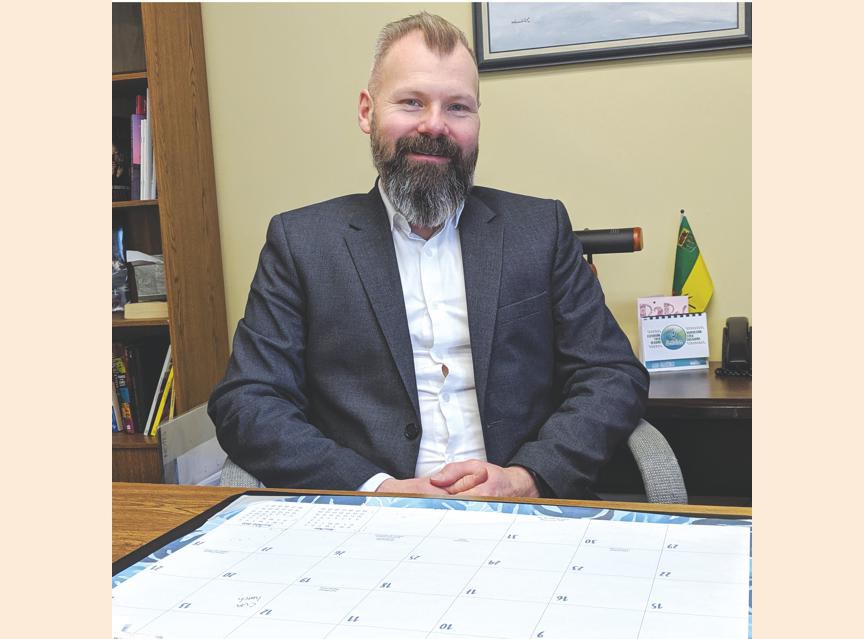The future of Saskatchewan’s power supply will include modular nuclear energy, along with solar and wind energy, said Weyburn-Big Muddy MLA Dustin Duncan, who is also the Environment minister and the minister in charge of SaskPower.
He was a guest presenter to the Weyburn Rotary Club recently via Zoom, and shared his thoughts on a wide variety of topics, including about his department’s recent announcement regarding modular nuclear energy, with the formation of an environmental secretariat to study this option.
Duncan said the province is exploring this option as part of the power supply in the future, with an eye to the planned shutdown of coal-generated power stations by 2030, as mandated by the federal Liberal government, and it’s not just Saskatchewan looking at this but provinces across the country.
These would be smaller nuclear reactors, not the large Cando reactors of the past, but the more compact ones such as what powers nuclear submarines, he said.
“When it comes to emissions, the federal government does not believe we can get to net zero by 2050 without some use of modular reactors,” said Duncan.
He added that a natural gas-powered generating plant would be much better than coal-powered ones, but the indication from the federal government is they won’t allow any new natural gas facilities to be built after 2030.
It will take several years for modular nuclear generators to be built, said Duncan, as Ontario will likely be the first province to have them by around 2027-28. “The earliest we can see one here is maybe 2032,” he added. “The U.S. Navy has been using a version of this in their nuclear submarines for a few decades. It’s based on that technology, so it’s not really new, but it’s new for use in a power utility.”
If Saskatchewan is going to pursue this technology, said Duncan, there are a lot of questions that need answering first, including how to integrate small reactors into the power grid, and if it would be stable enough for power production.
“Not all power is equal. There’s a lot of technical questions that SaskPower has to understand,” said Duncan, adding other questions include what kind of work force SaskPower would need, and what regulations need to be in place.
Acknowledging that this will be years down the road, Duncan pointed out “you don’t just announce that in 2030 and build them in the next year. There’s a lot of lead time that will need to take place.”
Rotary member Duane Schultz asked about solar energy, and whether the province is thinking of developing this option more.
“Absolutely,” Duncan answered, and indicated that for wind power, they have about 350 megawatts installed and operating, with a 200-megawatt plant under construction, and the next 300 megawatts to be awarded for a contract this summer or fall.
“We’ll have about 1,000 megawatts in place in a couple of years from now,” he added, noting there is a second 10-megawatt facility coming. The first 10-megawatt solar facility will not be online until next year.
He estimates there are 2,200 residents who are producing power with rooftop solar panels producing about 40 megawatts of power right now, and said there will be a couple of small power-generating setups near Weyburn in the next little while.
The province is also looking at expanding their interconnect with Manitoba Hydro to take in 215 megawatts of power.
Another option being looked at is geothermal energy, and Canada’s first geothermal plant is being developed south of Torquay, where Weyburn’s Panther Drilling was busy drilling a second well earlier this year, which Duncan was able to take in during a visit there.
“So we’re kind of doing everything,” he said, noting the next natural gas plant will be built near Moose Jaw.
Schultz noted he is one of the 2,200 who are generating solar power, and said he is considering installing a small natural gas generator that can supplement the power from the solar panels to offset the days of low solar energy, such as in December and January.
“The industry is going through so much disruption,” said Duncan. “The world of the power utility is changing dramatically, so we’re having some pretty intense conversations about the future of SaskPower.”
He pointed out one of the considerations for people who want to generate their own power is having less people on the power grid and paying less money towards upgrading the infrastructure for the power supply.
“People want the ability to self-generate, but they also want SaskPower to be there if their power goes down,” said Duncan.



.png;w=120;h=80;mode=crop)
